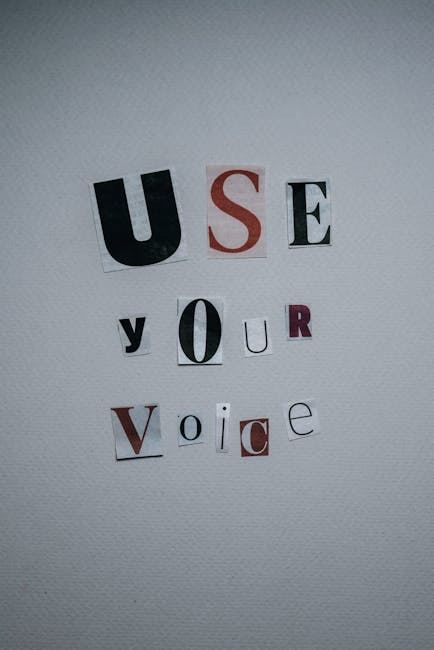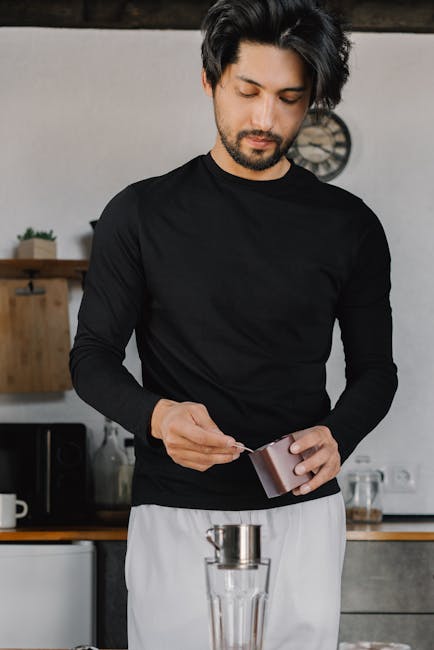Japanese Calligraphy (Shodo): Where Ink, Brush, and Heart Meet on Paper

Japanese Calligraphy (Shodo): Where Ink, Brush, and Heart Meet on Paper
Hey there, fellow art and culture enthusiast! Have you ever been captivated by the elegant strokes and profound beauty of Japanese calligraphy, or Shodo as it's known in Japan? I certainly have. For years, I've been drawn to this art form, not just for its visual appeal, but for the deep connection it forges between the artist's spirit and the written word. Let me share a bit of my journey exploring Shodo, the art of writing, and why it's so much more than just beautiful penmanship.
What is Shodo, Really? More Than Just Pretty Writing

Okay, so first things first: what exactly is Shodo? At its core, it's the art of Japanese calligraphy. But that's a bit like saying painting is just putting colors on canvas. Shodo is a complex and nuanced art form with deep historical and philosophical roots. It's about expressing yourself through the dynamic interplay of ink, brush, paper, and, most importantly, your inner self.
Unlike Western calligraphy, which often focuses on precise letterforms and uniformity, Shodo embraces fluidity and individuality. Each stroke is a deliberate expression of the artist's energy and intention. It's a dance between control and spontaneity, where imperfections are often seen as adding character and authenticity.
A Brief History: Tracing Shodo's Ancient Roots

To truly appreciate Shodo, it helps to understand its history. The art form journeyed from China to Japan around the 6th century, along with Buddhism and the Chinese writing system (Kanji). Initially, it was primarily used by monks for copying sutras. Over time, it spread to the aristocracy and eventually became a fundamental part of Japanese culture.
Several key periods shaped Shodo's evolution:
- Nara Period (710-794): Early adoption and adaptation of Chinese calligraphy styles.
- Heian Period (794-1185): The development of uniquely Japanese styles (Wayō), moving away from strict Chinese imitation.
- Kamakura Period (1185-1333): Influence of Zen Buddhism, emphasizing spontaneity and minimalist expression.
- Edo Period (1603-1868): Increased popularity and standardization of teaching methods.
- Modern Era: Shodo continues to evolve, blending tradition with contemporary expression.
Knowing this history gives context to the different styles and techniques you'll encounter when exploring Shodo. It's like understanding the lineage of a family; it helps you appreciate the individual members even more.
The Four Treasures: Essential Tools of the Shodo Artist

Let's talk about the tools of the trade, often referred to as the "Four Treasures of the Study" (文房四宝 - bunbō shihō):
- Brush (筆 - fude): The brush is arguably the most important tool. They come in various sizes, shapes, and materials (animal hair – goat, horse, wolf, etc.), each influencing the character of the strokes. A good brush holds a generous amount of ink and responds sensitively to pressure.
- Ink (墨 - sumi): Traditional ink is made from soot mixed with glue and formed into solid sticks. You grind the ink stick on an inkstone with water to create the liquid ink. The quality of the ink, the amount of water used, and the grinding technique all affect the color and consistency.
- Paper (紙 - kami): Special calligraphy paper is absorbent and allows the ink to bleed slightly, creating the characteristic soft edges. Washi (Japanese paper) is prized for its texture and durability. Different types of washi are used for different purposes and skill levels.
- Inkstone (硯 - suzuri): The inkstone is used to grind the ink stick and hold the liquid ink. A good inkstone is made of stone that is neither too hard nor too soft, allowing for smooth and consistent grinding.
While you can find modern substitutes (like bottled ink), there's something truly special about preparing your own ink and feeling the texture of the paper beneath your brush. It's a ritual that helps you center yourself and connect with the art form on a deeper level.
Mastering the Basic Strokes: The Building Blocks of Shodo

Okay, now for the practical side! Learning Shodo is like learning any language – you start with the basics. Mastering the fundamental strokes is crucial for creating well-balanced and expressive characters. Here are some of the key strokes:
- Vertical Stroke (縦画 - tategaki): A straight line drawn downwards. It requires control over pressure and speed.
- Horizontal Stroke (横画 - yokogaki): A line drawn from left to right, often with a slight upward slant.
- Dot (点 - ten): A small, distinct mark that can vary in shape and size.
- Hook (跳ね - hane): A flick at the end of a stroke, adding energy and direction.
- Curve (曲がり - magari): A smooth, flowing line that requires careful control of the brush angle.
Don't underestimate the importance of practicing these strokes! They form the foundation for all other characters. Think of them as the alphabet of Shodo. There are various exercises (like practicing the number "one" – 一 – repeatedly) that help you develop muscle memory and control.
Different Styles of Shodo: Finding Your Artistic Voice

As you progress, you'll discover different styles of Shodo, each with its own distinct characteristics and aesthetic. Here are some of the main styles:
- Kaisho (楷書 - kaisho): The "block" or "square" style. This is the most formal and structured style, with clear and distinct strokes. It's often the first style that beginners learn because of its clarity.
- Gyosho (行書 - gyōsho): The "semi-cursive" or "running" style. This style is more fluid and connected than Kaisho, with some strokes simplified or linked together. It allows for more personal expression.
- Sosho (草書 - sōsho): The "cursive" or "grass" style. This is the most abbreviated and flowing style, with strokes often merging into each other. It requires a deep understanding of the characters and a high level of skill.
- Reisho (隷書 - reisho): The "clerical" style. This style developed during the Han dynasty in China and is characterized by its flat, horizontal strokes and distinct "wave-like" endings.
- Tensho (篆書 - tensho): The "seal" style. This is the oldest style, used primarily for seals and ceremonial purposes. It's characterized by its symmetrical and stylized forms.
Experiment with different styles to find the ones that resonate with you. Each style offers a unique way to express yourself and connect with the written word. Personally, I'm drawn to Gyosho because of its balance between structure and fluidity.
The Importance of Mental Preparation: Mind Over Matter (and Ink)

Shodo isn't just about physical technique; it's also about mental preparation. Before you even pick up the brush, it's important to center yourself, clear your mind, and focus your intention. This is often achieved through meditation or quiet contemplation.
The mental state directly influences the quality of your calligraphy. If you're stressed or distracted, your strokes will likely be shaky and uneven. When you're calm and focused, your strokes will be more confident and expressive. Think of it as channeling your inner energy into the ink and paper.
Finding a Teacher or Resources: Guiding Your Shodo Journey

While you can certainly learn Shodo on your own through books and online resources, finding a qualified teacher can be incredibly beneficial. A good teacher can provide personalized guidance, correct your technique, and introduce you to the nuances of the art form.
If finding a teacher isn't possible, there are plenty of other resources available:
- Books: Look for books that explain the basic strokes, character structure, and different styles of Shodo.
- Online Courses: Many online platforms offer Shodo courses for beginners and advanced students.
- YouTube Tutorials: There are numerous YouTube channels that provide demonstrations and explanations of Shodo techniques.
- Museums and Exhibitions: Visit museums and exhibitions to see examples of Shodo masterpieces and learn about the history of the art form.
Don't be afraid to experiment and find what works best for you. The key is to be patient, persistent, and open to learning.
Beyond Technique: The Spiritual and Philosophical Aspects of Shodo

What truly sets Shodo apart is its deep connection to spirituality and philosophy, particularly Zen Buddhism. The act of creating calligraphy can be seen as a form of meditation, a way to cultivate mindfulness and connect with your inner self.
The process of grinding the ink, preparing the paper, and focusing your mind before making a stroke encourages a state of presence and awareness. Each stroke becomes a reflection of your inner state, revealing your strengths and weaknesses. Through Shodo, you can learn to cultivate patience, discipline, and self-awareness.
Embracing Imperfection: Finding Beauty in the Unexpected

One of the most important lessons I've learned from Shodo is to embrace imperfection. Unlike Western calligraphy, which often strives for flawless uniformity, Shodo values spontaneity and individuality. A slight variation in pressure, a subtle wobble in a line – these can all add character and authenticity to your work.
Don't be afraid to make mistakes! They're a natural part of the learning process. Instead of trying to erase or hide them, learn from them. Analyze what went wrong, adjust your technique, and try again. In Shodo, as in life, embracing imperfection can lead to greater growth and understanding.
My Personal Journey with Shodo: A Continuous Exploration

I'm still very much a student of Shodo. I find immense joy in the quiet concentration it demands and the satisfaction of creating something beautiful with my own hands. It's not always easy; there are days when my strokes feel clumsy and my ink seems to have a mind of its own. But even on those days, I find value in the process itself.
For me, Shodo is more than just an art form; it's a way to connect with my heritage, cultivate mindfulness, and express myself creatively. I encourage you to give it a try, even if you think you're not "artistic." You might be surprised at what you discover about yourself along the way.
Starting Your Own Shodo Adventure: A Few Tips to Get You Going

Ready to embark on your own Shodo journey? Here are a few tips to get you started:
- Start with the basics: Focus on mastering the fundamental strokes before attempting more complex characters.
- Practice regularly: Even short, consistent practice sessions are more effective than infrequent, long ones.
- Be patient: Learning Shodo takes time and effort. Don't get discouraged if you don't see results immediately.
- Find inspiration: Look at examples of Shodo by master calligraphers. Visit museums, browse online galleries, and read books on the subject.
- Don't be afraid to experiment: Try different brushes, inks, and papers. Explore different styles and techniques.
- Most importantly, have fun! Shodo should be a joyful and fulfilling experience.
Who knows, maybe one day you'll be creating your own Shodo masterpieces! Even if you never become a master calligrapher, you'll gain a deeper appreciation for this beautiful and profound art form.
So, pick up a brush, grind some ink, and let the journey begin! Ganbatte (good luck)!
Post a Comment